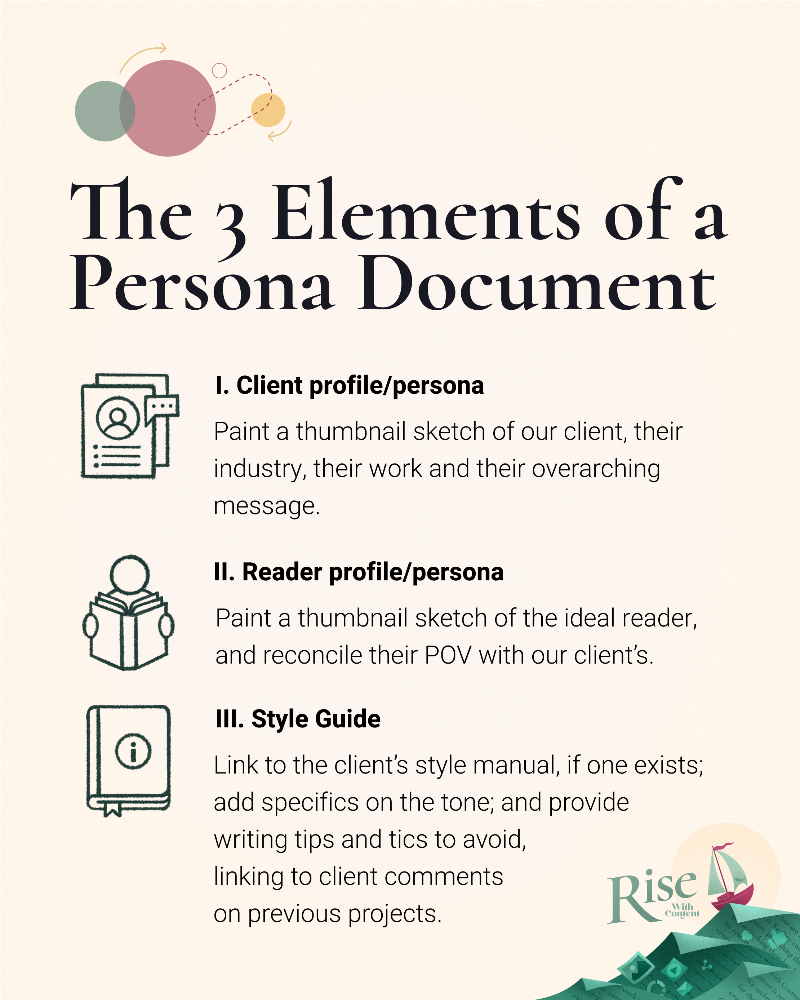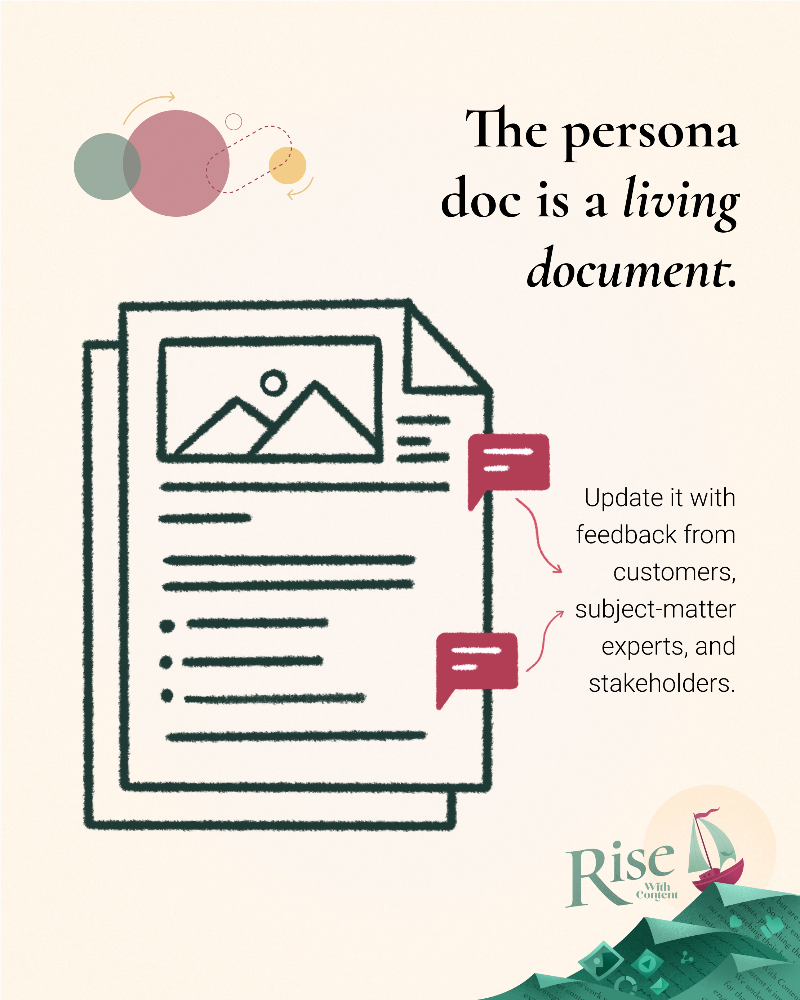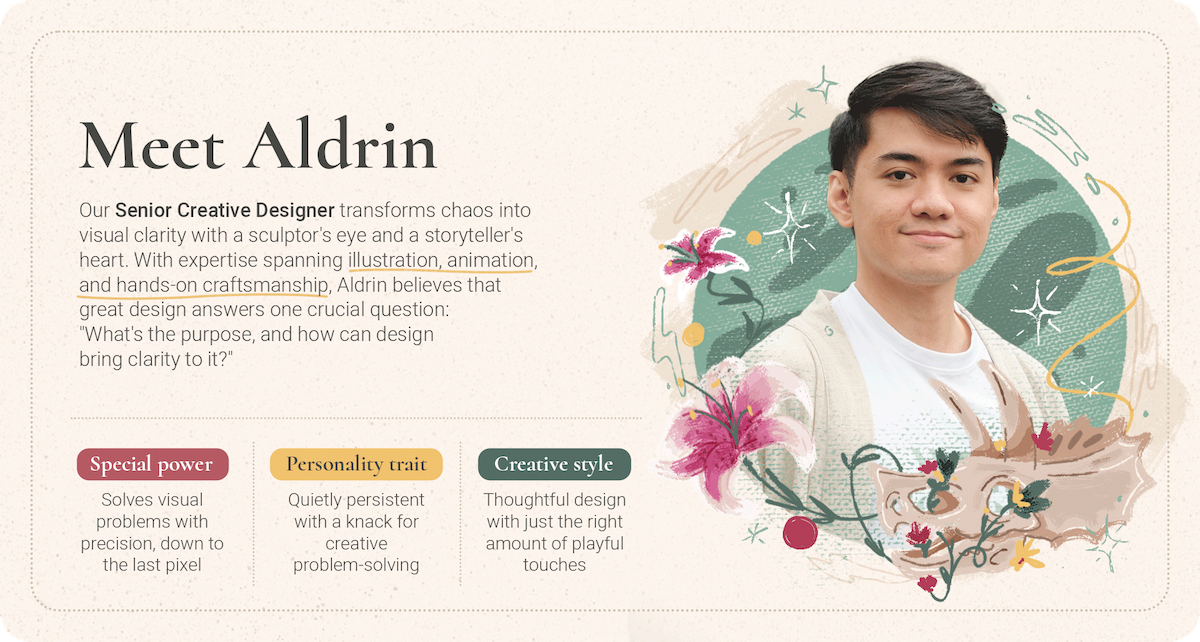
Writing effective business copy can feel like a game of telephone.
Our Southeast Asia-based clients range from top international business schools to big banks to telecoms giants — and they expect us to digest their business needs to create actionable content on the very first try. (It’s not “kiasu” if your competitors are really out to get you.)
As an editor, I used to struggle to get the writer to understand the client’s business and know what drives the target reader to action.
That all changed when we started to build persona documents for our clients.
Persona documents help paint an expansive picture of the client and the target audience, enabling our writers to communicate effectively and authentically across multiple projects.
Today we’ll share how we develop persona documents and how they work — in case you’d like to make your own persona doc for your marketing teams, too!
We’ll also share anonymized excerpts of persona docs we’ve developed for enterprises in Southeast Asia.
Painting an expansive picture
Where individual briefs drill into the specifics of each marketing asset, the persona document shows the big picture behind it all.
Persona documents are not merely profiles; they are strategic tools designed for both accounts and creatives’ benefit, to align the messaging between marketers and their intended audience.
For our writers, these documents provide a vivid and detailed understanding of who they are writing for and what they need to convey.
The ultimate goal is to be a messenger for the client (or, in your case, for your brand), ensuring that the content connects with the reader’s specific needs.

Defining our client (or your brand)
To define each brand for our writers, we’ve taken a FAQ approach to frame their industry, their work and their overarching message.
1. Who is the client, and what do they do? Introduce the client, their industry and their location.
Different industries have distinct norms, terminologies, and audience expectations. Writing for a tech company differs significantly from creating content for a public sector entity.
Location influences content too; a Southeast Asian company’s tolerance level for opinionated content typically differs from that of a Western one.
2. What kind of content do they want us to produce? Show past client publications to help the writer understand their style, tone, and perspectives.
Go deep into the client’s goals for their content. Are they aiming to inform, persuade, entertain, or educate? Are they looking to build brand awareness, generate leads, or establish thought leadership?
Knowing their goals allows writers to tailor their content accordingly.
3. What tone of voice do they want to convey? Define the client’s personality type relative to their target audience.
This includes tone, language, and level of formality. Writers should understand whether they need to use a conversational, authoritative, or technical tone.
Are they a trusted advisor who understands CTOs’ specific issues revolving around digitalisation? Are they a friendly expert trying to boil down a topic with many moving parts?
Writers also need to be aware of what’s considered appropriate business speak in a particular country. Clients in different countries tend to disagree on what’s considered an acceptable “conversational tone” for business writing.

At the end of this section, we hope to build a picture of the client that includes their preferences, expectations, strategic goals, and public personality.
Defining our reader
Our writers have to completely identify with the target audience, so they can convincingly represent the client’s message in their copy.
But the readers’ motivations might not completely align with the client’s; they can be complex and multifaceted.
In the next section, we create a Q&A to help reconcile the reader’s POV with our client’s:
1. Who are the preferred readers for the content we produce for this client? Introduce the writer to their target readers in this section: describing their age, career path, geography, and industry.
Describe the reader’s values, interests, attitudes, and lifestyle.

2. What reader pain points do our content address? Identify the challenges and needs of the reader that are pertinent to our client.
What problems are they trying to solve? What information are they seeking? We can imply, but not yet state outright: how can these needs be met by the client’s product or service?
3. What should readers do once they’ve read our content/what outcomes are preferable? We want the reader to be moved to action after they read our content – what action do we want them to take?
Explicit: do we lead them to a signup page?
Implicit: do we want to persuade them that our widgets are better than the competition’s?

By the time the writer is done with this section, we hope they have all the information necessary to tailor their messaging in a way that engages and appeals to the intended readers.
A Living Document
We devote the rest of our persona document to a client-specific style guide.
All this information is intended to evolve over time — we’re not carving a memorial in stone, but a living document that can be updated as the client provides more feedback or as the target audience’s preferences evolve.

For your own persona document, you can do this by keeping track of feedback from your clients, SMEs, bosses, and other stakeholders — and link to them (if a live link can be created to a comment on a separate document) or paste a screenshot otherwise.
Benefits of persona documents
By creating and using persona documents, the creative process improves in more way than one:
- Increased efficiency: Account managers can use these documents as a “dashboard view” of the client’s personality and objectives, streamlining the briefing process.
- Faster onboarding: New writers can get up to speed quickly, reducing the time and effort required to brief them on new projects.
- Cultural competence: Speaking the reader’s language helps a marketer connect and resonate with them, as well as avoid inadvertently offending them.
- Greater consistency: Using the information in our persona document, writers can quickly internalise the client’s style and voice. The document helps them create content that sounds like it was written by the client themselves — staying consistent even across different briefs and even different writers!
- Enhanced engagement: Equipped with a clearer understanding of the target audience, writers can create content that is more engaging and relevant, increasing the likelihood of achieving the client’s goals.
Our persona docs are a work in progress. As we learn more about our clients and their preferences, and as their industry evolves to cope with new technology and new customer demands, we reshape our documents to keep in lockstep with the client’s evolving communication goals.
D.I.Y.
Whether you’re an in-house marketer, agency-side, or a freelance content strategist, persona documents will help you align the brand’s value proposition with the reader’s pain.
And in the end, that’s what effective content marketing is all about.
Let’s raise the bar of content marketing in Southeast Asia
We hope you enjoy Rise and find this newsletter helpful.
And if you do, why not share it with a friend?
Thanks for reading!
![]()
Mike
with help from Kat and Daniel
Illustrations by Aldrin



